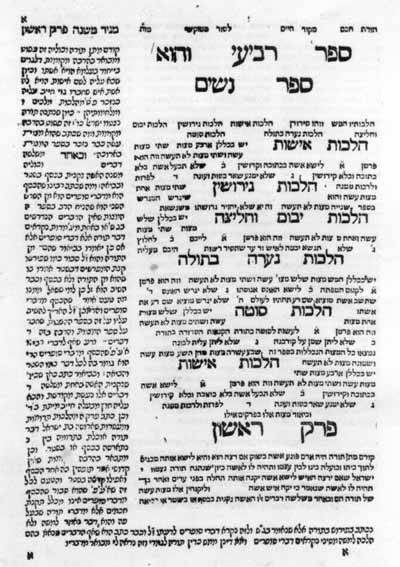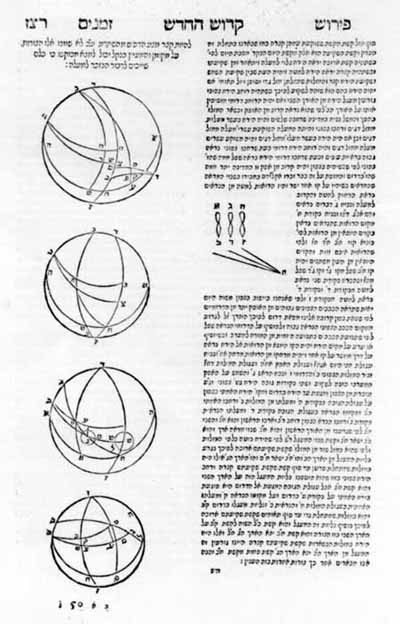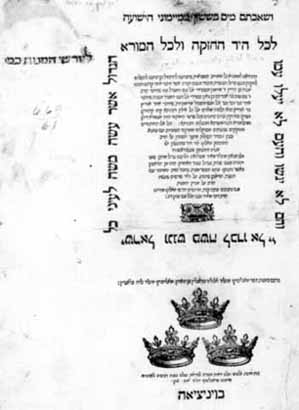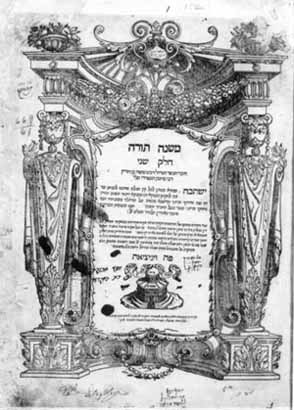The Work of Maimonides: Consigned to Flames
Mishneh Torah, Venice, 1550-51, and Mishneh Torah,Venice, 1550-51, are two editions from the same place and done in the same year. And thereon hangs a tale of woe we first encountered in the chapter on the Talmud.
 |
The first was an edition published by the newly established press of Alvise Bragadini, the second by Marco Antonio Giustiniani, who had assumed the mantle once worn by Daniel Bomberg as the premier printer of Hebrew books, declaring on his printer's mark which depicted the Temple in Jerusalem, "Great shall be the glory of this house." Recriminations, accusations, a rabbinic ban, and a papal decree kindled pyres in which the Talmud and kindred Hebrew books were burned in leading Italian cities. The wanton destruction of sacred books, the hatred and fears engendered, the severe blow to Jewish cultural and spiritual life were tragic, but perhaps more tragic was the realization of the precariousness of Jewish existence. Christian printers were competing for business; apostates were currying favor with their new coreligionists by wreaking vengeance on their old; a curia eager for yet another opportunity to proclaim the "glory of God" was putting His word and His law to the flames; and Jews, fearful of frightful punishment, were offering up to the flames their most precious possessions, their sacred books.
|
|
As the sun was setting on the Daniel Bomberg Hebrew printing empire in Venice, two aspirants competed for his mantle — Marco Giustiniani and Alvise Bragadini. The former, aware of the popularity of the Mishneh Torah, planned a grand edition, but the latter was able to publish one earlier. The Giustiniani edition appeared in the same year, and carried an attack on the other. Attack led to counterattack, accusations, recriminations, a rabbinic ban, and soon to a papal decree ordering the burning of the Talmud-with kindred books added to the pyre. (Moses Maimonides, Mishneh Torah, Bragadini, Venice, 1550-51 and Moses Maimonides, Mishneh Torah, Giustiniani, Venice, 1550-51, Hebraic Section, Library of Congress Photo)
Not many copies of these historic editions remain. The Library's are made all the more precious by their rarity and by their role as witnesses to history.
 |
The printing house of Giustiniani did not long survive, but that of Bragadini flourished. After the fires in the city squares and in the hearts of the zealots were extinguished, Bragadini published a splendid edition of the Mishneh Torah in 1574. It consisted of four volumes, tastefully arranged, well printed on fine paper, replete with traditional commentaries and featuring a new one, the Kesef Mishneh of "the wondrous scholar," Joseph Caro, published during his lifetime. This edition unites the author of the first comprehensive code of Jewish law, Maimonides, with Caro who fashioned what was to become the standard code of Jewish law, the Shulhan Aruch.
Sources: Abraham J. Karp, From the Ends of the Earth: Judaic Treasures of the Library of Congress, (DC: Library of Congress, 1991).




